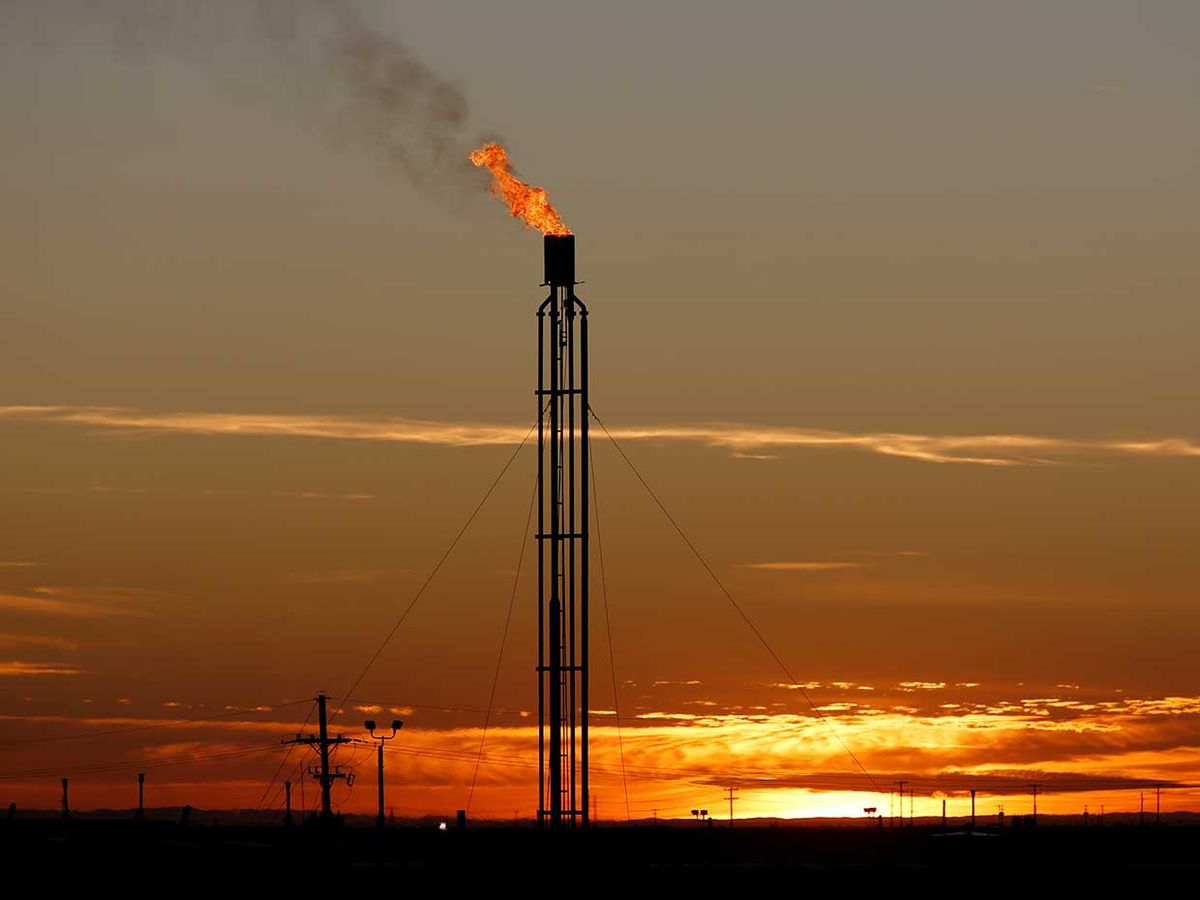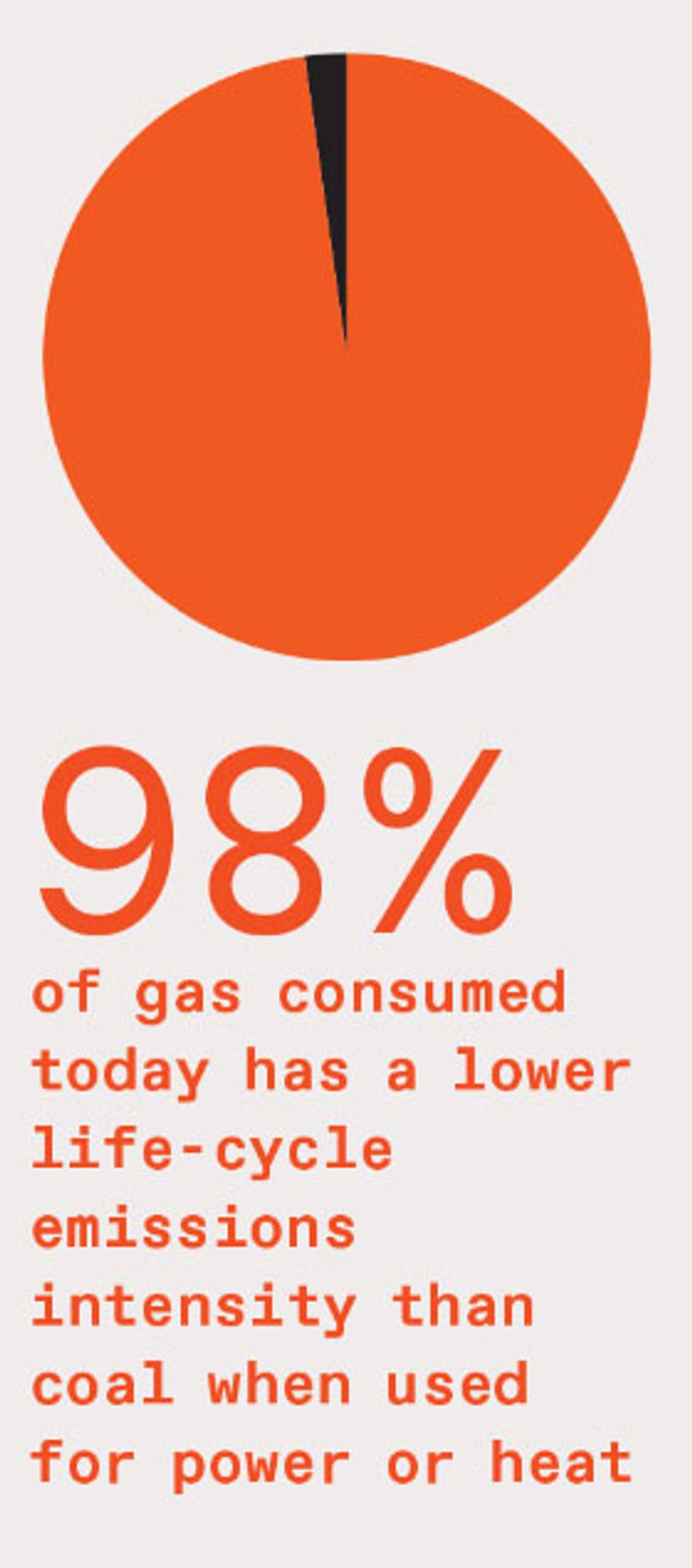As it comes up inside a production steel pipe, natural gas is usually a mixture of the lightest alkanes, which are hydrocarbons of the CnH2n+2 series. Methane (CH4) dominates (between 85 and 95 percent), followed by ethane (C2H6, typically 2 to 7 percent by volume), small amounts of propane (C3H8), butane (C4H10), and pentane (C5H12), and traces of carbon dioxide, hydrogen sulfide, and other gases. Gas processing removes most of these things before the final product, about 95 percent methane, reaches consumers.
Natural gas is abundant, low-cost, convenient, and reliably transported, with low emissions and high combustion efficiency. Natural-gas-fired heating furnaces have maximum efficiencies of 95 to 97 percent, and combined-cycle gas turbines now achieve overall efficiency slightly in excess of 60 percent. Of course, burning gas generates carbon dioxide, but the ratio of energy to carbon is excellent: Burning a gigajoule of natural gas produces 56 kilograms of carbon dioxide, about 40 percent less than the 95 kg emitted by bituminous coal.
This makes gas the obvious replacement for coal. In the United States, this transition has been unfolding for two decades. Gas-fueled capacity increased by 192 gigawatts from 2000 to 2005 and by an additional 69 GW from 2006 through the end of 2020. Meanwhile, the 82 GW of coal-fired capacity that U.S. utilities removed from 2012 to 2020 is projected to be augmented by another 34 GW by 2030, totaling 116 GW—more than a third of the former peak rating.
So far, so green. But methane is itself a very potent greenhouse gas, packing from 84 to 87 times as much global warming potential as an equal quantity of carbon dioxide when measured over 20 years (and 28 to 36 times as much over 100 years). And some of it leaks out. In 2018, a study of the U.S. oil and natural-gas supply chain found that those emissions were about 60 percent higher than the Environmental Protection Agency had estimated. Such fugitive emissions, as they are called, are thought to be equivalent to 2.3 percent of gross U.S. gas production.
Headlines decried natural gas as unnatural, painting it blacker than coal. Bill McKibben concluded, with the rhetorical restraint befitting the country's leading climate catastrophist, that turning from coal to natural gas is “as if we proudly announced that we kicked our Oxycontin habit by taking up heroin instead."
Without doubt, methane leakages during extraction, processing, and transportation do diminish the overall beneficial impact of using more natural gas, but they do not erase it, and they can be substantially reduced. In its detailed 2020 assessment of life-cycle emissions resulting from natural-gas and coal supply, the International Energy Agency concluded that “an estimated 98 percent of gas consumed today has a lower life-cycle emissions intensity than coal when used for power or heat." Moreover, a 2019 assessment found that about three-quarters of today's methane emissions from the oil and gas industry can be controlled by deploying known technical fixes—and, most significantly, that about 40 percent of those emissions could be avoided at no net cost.
Even the most efficacious drugs have undesirable side effects; even the best technical fixes have downsides. To think that the supposedly greenest alternatives, photovoltaics and wind turbines, make no fossil-fuel footprint and bring only benefits is to ignore reality. So too does the uninformed judgment about the evils of natural gas: It is not a perfect choice—nothing is—but its benefits surpass its drawbacks, and they could be raised even further.
The Torch Passes
We get ever more generation capacity from natural gas and ever less from coal.
This article appears in the June 2021 print issue as “Fugitive Emissions."
Vaclav Smil writes Numbers Don’t Lie, IEEE Spectrum's column devoted to the quantitative analysis of the material world. Smil does interdisciplinary research focused primarily on energy, technical innovation, environmental and population change, food and nutrition, and on historical aspects of these developments. He has published 40 books and nearly 500 papers on these topics. He is a distinguished professor emeritus at the University of Manitoba and a Fellow of the Royal Society of Canada (Science Academy). In 2010 he was named by Foreign Policy as one of the top 100 global thinkers, in 2013 he was appointed as a Member of the Order of Canada, and in 2015 he received an OPEC Award for research on energy. He has also worked as a consultant for many U.S., EU and international institutions, has been an invited speaker in more than 400 conferences and workshops and has lectured at many universities in North America, Europe, and Asia (particularly in Japan).





